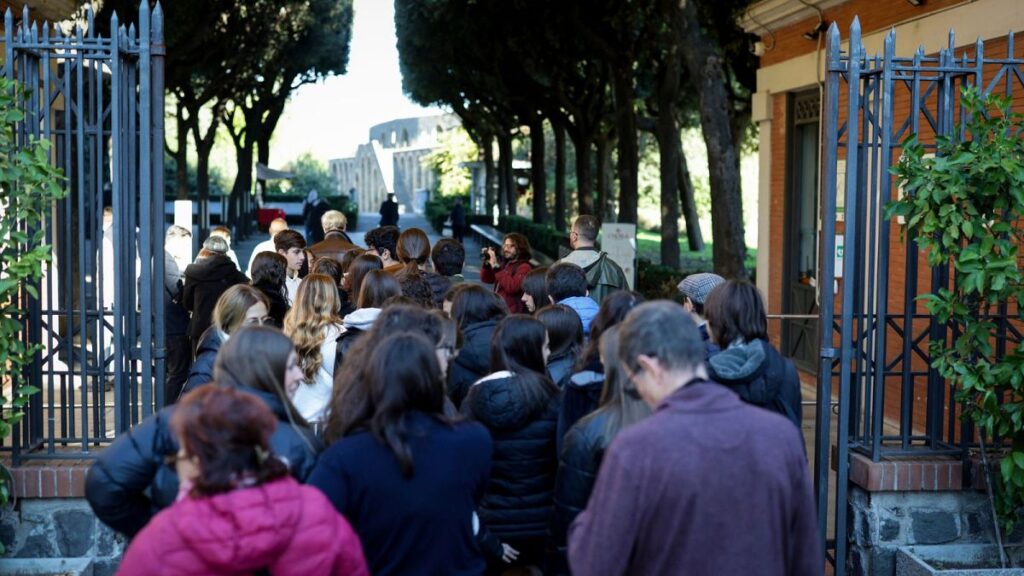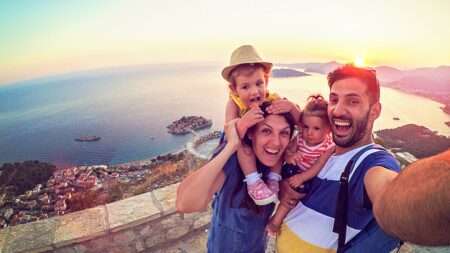Italian tourism is set to reach new heights in the Jubilee Year. Here’s how cities are getting ahead of the crowds in 2025.
Tourists have long been enamoured with Italy, but the feeling seems increasingly unreciprocated.
With its enviable variety of ancient cities, unspoiled villages, slopes and colourful sea towns, Italy keeps visitors wanting more.
But like other Southern European countries, all of this flattering demand is coming at a cost to locals, particularly in the arena of affordable housing.
Last year saw a range of new measures drafted in to protect ‘la dolce vita’ for residents. Here’s what Italophiles need to be aware of in 2025.
You have to meet Airbnb owners in person
Key boxes are a nifty way for travellers to let themselves into Airbnb and other holiday apartments. But in Italy, they’ve become a symbol of the unwelcome way in which such short-term rentals are taking over neighbourhoods.
In protest, campaigners in popular cities like Florence, Rome and Milan have been sabotaging the boxes or daubing them with a red cross.
In November, the government signed off on a measure to ban the tech, citing safety concerns.
“The automated management of check-in and entry to a property without visual identification of guests” means there is a risk it “could be occupied by one or more individuals whose identities remain unknown to the relevant police authorities, posing a potential danger to the community,” according to a statement from the interior ministry.
Rental owners or managers now need to meet guests to confirm identity documents in person and handle check-in procedures face-to-face.
Venice visits come at a higher cost
Venice is an epicentre of overtourism, with visitor numbers overwhelming the capacity of the lagoon-locked city. Putting a fair price on entry has been a heated topic for years.
People staying overnight in the historic centre have to pay a tourist tax towards its upkeep. In 2024, a day-tripper tax of €5 was brought in.
This year, officials are extending the number of days on which it applies: now every Friday through Sunday and on holidays from 18 April to 27 July, for a total of 54 days.
The levy will also be doubled to €10 for last-minute arrivals – counted as tourists who make reservations less than four days in advance.
The payment programme aims to reduce crowds on peak days, encourage longer visits, and improve the quality of life for residents.
Tourist taxes could rise in other Italian cities
Venice isn’t the only place that seeks to tackle overtourism with taxes. Italian municipalities set their own rates, so they vary depending on where you go.
In Rome, the overnight fee ranges from €3 to €7, depending on the type of accommodation you choose. In Milan, it’s between €2 and €5, and in Florence from €1 to €5.
But at the national level, plans are afoot for a new tourist tax of up to €25 per night for the most expensive hotel rooms.
The government said it was considering the move to make tourists “more responsible” and help financially disadvantaged areas fund services like bin collections.
Access to popular Italian sites is limited
Despite the diversity of Italy’s natural and cultural attractions, a few ancient sites always top the tourist rankings.
Rome’s Colosseum and the remains of Pompeii are the country’s two most-visited attractions. In recent years, both historic sites nd have had to introduce visitor caps to cope with that demand.
The former capped visitor numbers to 3,000 at any one time in 2019. Following a record high of 36,000 people a day in October, Pompeii went the same way, with a daily visitor cap of 20,000 in place as of mid-November 2024.
Another focal point in Rome – the glorious Trevi Fountain – is also at the centre of an overtourism storm.
The Italian capital is considering a ticketing system to thin out crowds around the 18th-century fountain.
Rome sees on average 35 million visitors each year – and that number is set to be higher still in 2025 as the Jubilee, a year-long religious event, is set to attract millions more.
Read the full article here







